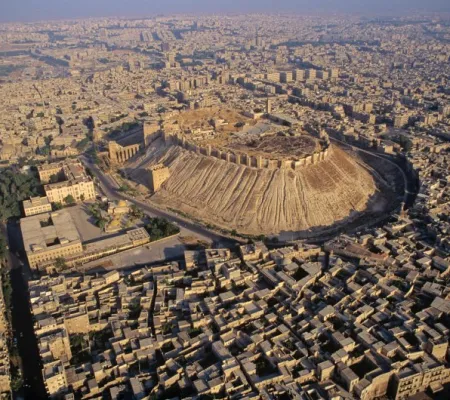"President Donald Trump’s tweets Saturday threatening 52 Iranian targets, including cultural sites, seems designed to elicit precisely the response the U.S. doesn’t want: the instantaneous unification of the Iranian people behind their government," wrote Associate Professor of Art History Stephennie Mulder in her opinion piece for USA Today following an announcement from US President Donald Trump to include cultural sites in a list of targets he threatened to attack if Iran retaliated over the killing of military leader Major General Qassim Suleimani.
The president's comment sparked outrage as international experts argued that the targeting of cultural sites would constitute a war crime. Mulder and other experts were not alone in their reaction to the president's statements, as seen by a public condemnation letter signed by academic researchers of Iranian history, archaeology, art and culture, based in national museums and universities across the world; of which Mulder was among the signees.
However, Mulder's expertise in Iranian history as a historian of Islamic art and architecture was called upon again (Politifact) and again (BBC interview at 3:22:30) as events transpired, even when events ultimately dissipated at the time when the Pentagon released a statement eliminating the possibility of an attack on Iranian cultural sites. In an opinion piece for TIME magazine, Mulder deftly challenged the trope that the history of the Middle East is one primarily defined by conflict. "This trope is frequently turned to by those who would have the world believe that war in the Middle East is somehow innate and inevitable," writes Mulder. "But a look at the history of the region reveals that it’s simply not true."
Even the Mongols, famed for their brutality in conquest, realized the necessity for coexistence. In the 13th century, after creating the largest contiguous land empire the world has ever known, they established the “Pax Mongolica” — the Mongol Peace — that guaranteed religious freedom to all Mongol subjects. One branch of the Mongols, the Ilkhanids, ruled over modern-day Iran and — after converting to Islam — sparked a renaissance of art and culture that directly parallels the more famous one in Italy. And indeed, up through the Ottoman era and until the rise of political modernity, such systems thrived. The real history of the Middle East is a far cry from a “default” of war. In fact, the default was pragmatic coexistence.
Since January 6, there has been no further news of targeted attacks on cultural sites in Iran.


